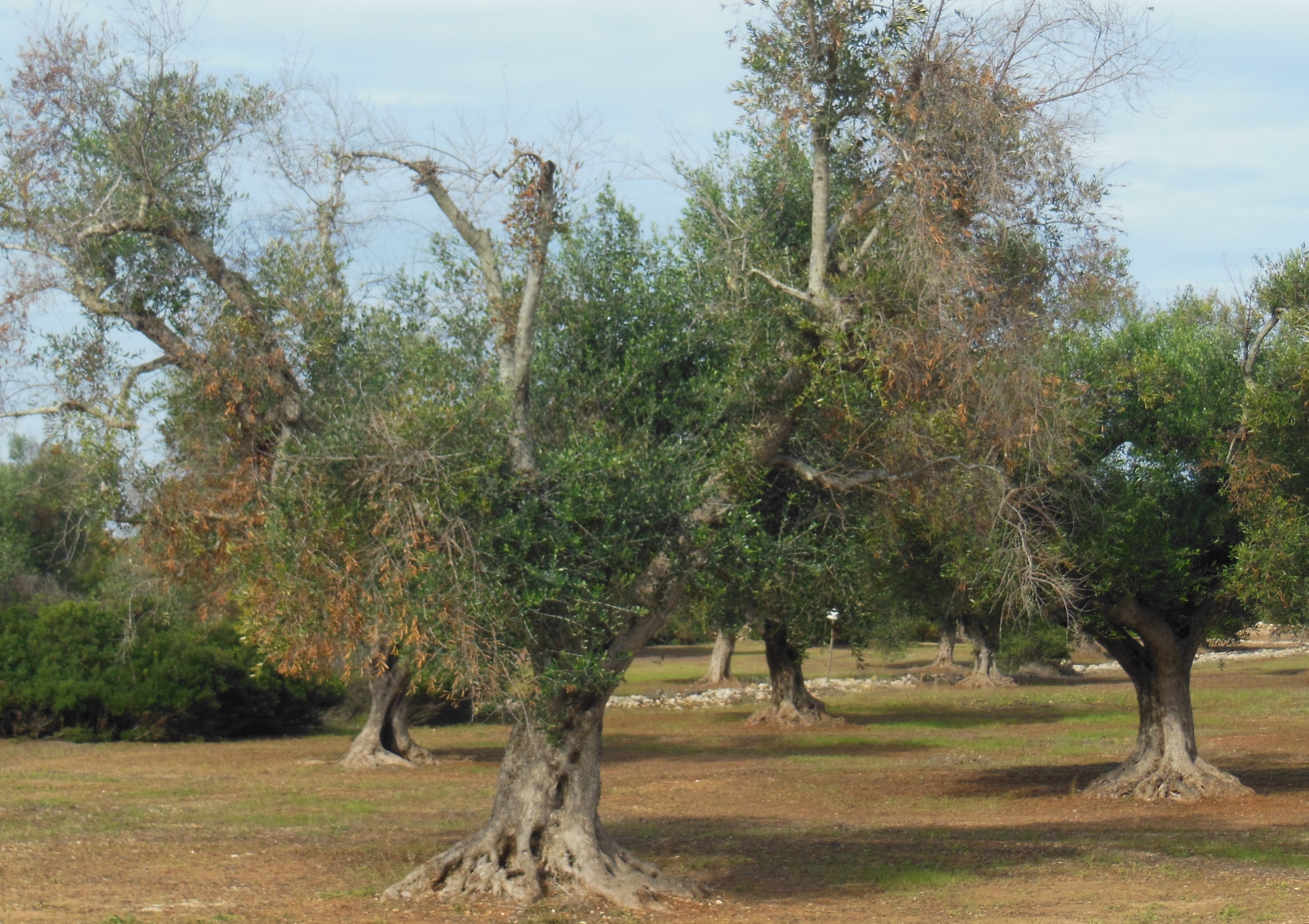The olive tree (Olea europaea) is an ancient cultivated plant that was originally domesticated by early civilizations in the eastern Mediterranean regions. Today, the major olive-producing countries are Spain, Italy, Greece, and Turkey, which provide about 60–70% of the world's olives. However, the olive trees of Italy are being threatened by the spread of a deadly bacterial pathogen, Xylella fastidiosa, which causes olive leaf scorch. Specifically, the bacterium prevents water movement (via the xylem transport system) in infected trees, causing the leaves of the olive tree to turn yellow and brown, and then fall off. The loss of leaves is in turn followed by a withering of the branches, and the tree eventually collapses and dies. So far, the bacterium is decimating the olive groves located in the Apulia region of southern Italy. The pathologic condition, termed olive quick decline syndrome (OQDS), is a serious one, and it is feared that it will spread to other olive-growing areas of Europe. It is also possible that the bacterium may infect other fruiting trees and plants, including plum, almond, and citrus fruit trees, as well as grapevines. See also: Domestication (anthropology); Fruit; Fruit, tree; Horticultural crops; Lamiales; Olive; Plant pathology; Plant-water relations; Xylem

The X. fastidiosa bacterium destroying the olive trees in southern Italy is not native to Italy or even to Europe. The pathogenic culprit is thought to have originated in Costa Rica and been transported to Italy via infected ornamental coffee plants. After the pathogen arrived in Italy and became established, it was disseminated from plant to plant by insect vectors; infected cultivar grafts might also have played a role. Although the bacterium was not identified in Italy until late 2013, it likely arrived years earlier; thus, it has been able to firmly establish itself, adding to the severity of its consequences. See also: Bacteria; Entomology, economic; Invasion ecology; Pathogen; Plant defense against pathogens
To date, no known curative treatment can prevent the disease; the progressive spread of the pathogen can only be contained. Investigators are testing for the bacterium widely, and trees found to be infected have been burned and destroyed to halt the disease’s propagation. Thus, the centuries-old olive groves in southern Italy are in grave danger both from the disease itself and from the aggressive attempts to stave it off by eliminating all trees that have even been exposed to X. fastidiosa. European Union researchers estimate that more than 10% (and possibly much more) of the 11 million olive trees in southern Italy may need to be cut down initially to stop the spread of the disease. Further preventative measures would include the establishment of buffer zones and tree-eradication strips that might contain the disease within its current regional borders. See also: Agricultural science (plant); Disease ecology; Insect control, biological





